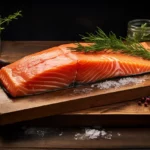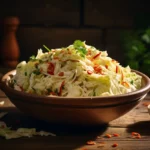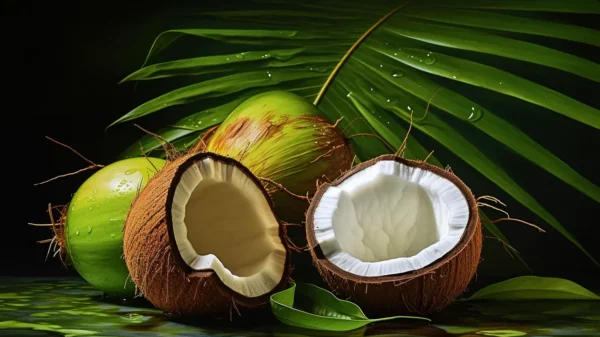Welcome to our comprehensive guide on sugar glider diet recipes! If you are a proud owner of these adorable marsupials, you know how important it is to provide them with a nutritious and balanced diet. In this blog post, we will delve into the world of sugar glider nutrition, exploring various diet options, essential ingredients, and expert tips to ensure your little companions thrive.
Jump right away to 20 Sugar Glider Recipes!
Sugar gliders have specific dietary requirements that need to be met in order to maintain their health and well-being. While there are several diet options available, including the TPG Diet, BML Diet, Priscilla Price Diet, and Exotic Nutrition Diet, our focus will be on providing a fresh and natural diet for your sugar gliders.
To start, we will discuss the key components of a sugar glider’s diet. Fresh fruits, such as apples, grapes, and bananas, are essential sources of vitamins and minerals. Sweet potatoes and green beans provide fiber and important nutrients. Monkey biscuits, specially formulated for sugar gliders, offer a balanced combination of proteins, carbohydrates, and fats.
Understanding the nutritional needs of sugar gliders is crucial. These small animals require a varied diet that includes protein sources like mealworms, crickets, and boiled chicken. Additionally, calcium powder should be added to their meals to support bone health.
While fresh foods are an important part of their diet, providing a balanced mix is equally vital. We will guide you through the process of creating homemade diets for your sugar gliders. You’ll learn how to use a food processor to prepare a mix of fresh and cooked ingredients, ensuring your gliders receive a well-rounded and nutritious meal.
Proper portion sizes and feeding schedules are also essential factors to consider. A large bowl can be used to mix the gliders’ food, while smaller containers can be used for daily feedings. Plastic freezer containers are ideal for storing food, maintaining its freshness for future use.
In addition to the core diet, we will explore the importance of supplements. Olive oil, bee pollen, apple sauce, and acacia gum can provide additional health benefits to your sugar gliders. These supplements can be added to their meals in measured amounts to enhance their overall well-being.
Our guide will also provide valuable insights into healthy treats and snacks for your sugar gliders. From Bourbon’s Modified Leadbeater’s Mix, which includes a variety of ingredients like yogurt drops and wheat germ, to monthly treats that boost the immune system, we’ll show you how to keep your gliders happy and satisfied.
Finally, we will share expert tips and advice for maintaining a healthy sugar glider diet. We’ll discuss the benefits of free feeding versus controlled portions, considerations for small animals, incorporating high-phosphorus foods, and the importance of plain yogurt. We’ll even explore rainforest-inspired diets and the role of reptile vitamins in your glider’s nutrition.
In conclusion, providing a well-rounded and nutritious diet is vital for the health and happiness of your sugar gliders. By following our comprehensive guide, you’ll have the knowledge and tools to create a diet plan that meets their specific needs. So, let’s embark on this journey together and ensure your furry friends enjoy a vibrant and fulfilling life through a natural and nourishing diet.
Introduction to Sugar Glider Diets
Sugar gliders are unique and fascinating creatures that require a specialized diet to thrive. In this section, we will explore the importance of a nutritious diet for sugar gliders and provide an overview of the different diet options available.
Importance of a Nutritious Diet for Sugar Gliders
A healthy and balanced diet is crucial for the overall well-being of sugar gliders. These small mammals have high metabolisms and require a diet that provides them with the necessary nutrients to support their energy levels, growth, and immune system.
A proper diet helps ensure that sugar gliders maintain a healthy weight, have strong bones, and have a well-functioning digestive system. It also plays a significant role in preventing common health issues that can arise from poor nutrition, such as obesity, dental problems, and vitamin deficiencies.
Overview of Sugar Glider Diet Basics
There are several diet options available for sugar gliders, each with its own set of guidelines and recipes. Let’s briefly explore some of the popular diet options:
- TPG Diet: The TPG (Two-Part Grain) diet is a popular choice among sugar glider owners. It consists of a dry mix that includes a variety of grains, cereals, and protein sources, along with fresh fruits and vegetables.
- BML Diet: The BML (Bourbon’s Modified Leadbeater) diet is another commonly used diet for sugar gliders. It focuses on a balanced mix of fruits, vegetables, proteins, and supplements to provide a well-rounded nutritional profile.
- Priscilla Price Diet: The Priscilla Price diet emphasizes a natural and whole-food approach, incorporating fresh fruits, vegetables, and protein sources. It aims to mimic the sugar gliders’ natural diet in the wild.
- Exotic Nutrition Diet: Exotic Nutrition offers a range of commercially prepared diets specifically formulated for sugar gliders. These diets often come in pellet or powdered form and are designed to provide a balanced and complete nutrition profile.
These diet options offer different approaches to meeting the nutritional needs of sugar gliders. It’s important to choose a diet that aligns with your glider’s specific requirements and consult with a veterinarian or experienced sugar glider owner for guidance.
Common Ingredients in Sugar Glider Diets
Regardless of the diet option you choose, there are several common ingredients that play a vital role in a sugar glider’s diet. Let’s take a closer look at some of these essential components:
Fresh Fruits
Fresh fruits are a key part of a sugar glider’s diet, providing essential vitamins, minerals, and antioxidants. Some popular fruit options include apples, grapes, bananas, and melons. It’s important to offer a variety of fruits to ensure your gliders receive a diverse range of nutrients.
Sweet Potatoes
Sweet potatoes are an excellent source of fiber, vitamins, and minerals. They provide essential carbohydrates for energy and contribute to a balanced diet for sugar gliders. Sweet potatoes can be cooked and mashed or offered in small pieces as a tasty treat.
Green Beans
Green beans are rich in vitamins A, C, and K, as well as fiber and antioxidants. They are a great addition to a sugar glider’s diet, promoting healthy digestion and overall well-being. Green beans can be served raw or lightly steamed.
Monkey Biscuits
Monkey biscuits, also known as primate or insectivore biscuits, are specially formulated pellets that provide a balanced combination of proteins, carbohydrates, and fats. These biscuits are designed to meet the nutritional needs of sugar gliders and can be an essential component of their diet.
By incorporating these ingredients into the sugar glider’s diet, you can ensure that they receive the necessary nutrients for optimal health and vitality.
In the next section, we will dive deeper into creating a balanced diet for sugar gliders, exploring homemade diets, incorporating fresh foods, and understanding portion sizes. So, let’s continue our journey to provide the best possible nutrition for our furry friends.
Creating a Balanced Diet for Sugar Gliders
To ensure the optimal health and well-being of your sugar gliders, it is crucial to provide them with a balanced diet that meets their nutritional needs. In this section, we will explore how to create a well-rounded diet for your furry friends, including homemade diets, incorporating fresh foods, and understanding portion sizes.
Preparing Homemade Diets
Many sugar glider owners prefer to prepare their gliders’ diets from scratch, as it allows for greater control over the ingredients and ensures a fresh and varied diet. One method of creating a homemade diet is by using a food processor to blend a combination of fresh fruits, vegetables, and protein sources.
Start by selecting a variety of fruits and vegetables that are safe for sugar gliders to consume. Apples, oranges, blueberries, and leafy greens like kale or spinach are excellent choices. Chop the fruits and vegetables into small pieces that can easily be processed.
Next, add protein sources such as cooked chicken, turkey, or mealworms into the food processor. This will provide essential nutrients and help meet the gliders’ protein requirements. Blend the ingredients together until you achieve a smooth consistency.
To ensure that your sugar gliders receive the necessary calcium, you can sprinkle a calcium powder designed for small animals into the mixture. Calcium is crucial for maintaining strong bones and preventing calcium deficiencies.
Incorporating Fresh Foods into the Diet
While homemade diets offer flexibility and control, it is important to incorporate fresh foods into your sugar gliders’ diet. Fresh fruits and vegetables provide additional nutrients and variety to their meals. It is recommended to offer a rotation of 2-4 different fruits and vegetables to ensure a diverse nutritional profile.
When selecting fresh produce, choose options that are safe for sugar gliders and free from pesticides or chemicals. Wash the fruits and vegetables thoroughly before serving them to your gliders. You can offer them in small pieces or even try skewering the pieces onto small sticks for added enrichment.
In addition to fruits and vegetables, small amounts of corn and broccoli can be included in the diet. These vegetables should be cooked or steamed to enhance digestibility and prevent any potential digestive issues.
Guidelines for Portion Sizes
Proper portion sizes are essential to maintain a balanced diet for sugar gliders. A large bowl can be used to mix the gliders’ food, ensuring that all ingredients are evenly distributed. This will help guarantee that each glider receives a fair share of the nutrients.
To facilitate daily feedings, it is recommended to divide the mixture into smaller containers. These containers can be easily stored and used to portion out the gliders’ meals on a daily basis. Plastic freezer containers are an excellent option for storing the food, maintaining its freshness and preventing spoilage.
Feeding Schedule and Considerations
Establishing a consistent feeding schedule is crucial for sugar gliders. It is recommended to feed them in the late afternoon or early evening when they are most active. This aligns with their natural feeding patterns in the wild.
When preparing their meals, it is important to avoid using artificial sweeteners or foods that are high in fat content. Artificial sweeteners can be harmful to their health, and high-fat foods can lead to obesity and associated health issues. Instead, focus on providing a balanced and varied diet that mimics their natural food sources.
Including ground turkey as part of their diet can provide an additional protein source. Cook the ground turkey thoroughly before blending it with the other ingredients. This will help ensure the safety of the meat and provide the necessary nutrients for your gliders.
As a seasoned cook for your sugar gliders, it is important to be mindful of the ingredients and their suitability for these exotic animals. Always consult with a veterinarian or experienced sugar glider owner for guidance and advice.
In the next section, we will explore the importance of supplements in a sugar glider’s diet. We will discuss the benefits of olive oil, bee pollen, apple sauce, and acacia gum, and how these supplements can enhance your gliders’ overall health and well-being. So, let’s continue on this journey of providing the best nutrition for our sugar gliders!
Enhancing the Diet with Supplements
Supplements play a vital role in ensuring that your sugar gliders receive a well-rounded and balanced diet. In this section, we will explore the benefits of various supplements, including olive oil, bee pollen, apple sauce, and acacia gum, and how they can enhance the overall health and well-being of your gliders.
Olive Oil
Olive oil is a healthy and natural supplement that can be added to your sugar gliders’ diet in small amounts. It is a rich source of healthy fats, including monounsaturated fats, which can support cardiovascular health and provide essential fatty acids.
When incorporating olive oil into your gliders’ diet, it is important to use it sparingly. Just a few drops mixed into their food can provide the necessary benefits without adding excessive calories. It can also help improve the texture and palatability of their meals.
Bee Pollen
Bee pollen is a nutrient-dense supplement that can provide a range of health benefits for sugar gliders. It is packed with vitamins, minerals, enzymes, and antioxidants. Bee pollen supports the immune system, aids digestion, and promotes overall well-being.
To introduce bee pollen into your gliders’ diet, start with small amounts and gradually increase the dosage. You can mix it into their food or offer it separately as a treat. Ensure that you are obtaining bee pollen from a reputable source to ensure its quality and purity.
Apple Sauce
Apple sauce can be a tasty and nutritious addition to your sugar gliders’ diet. It is a good source of dietary fiber, vitamins, and minerals. However, it is important to note that apple sauce should be unsweetened and free from artificial additives or preservatives.
You can mix a small amount of apple sauce into their food or offer it as a separate treat. This can add flavor and moisture to their meals, making them more enjoyable for your gliders. Remember to monitor their intake and ensure that the apple sauce is offered in moderation.
Acacia Gum
Acacia gum, also known as gum arabic, is a natural gum derived from the acacia tree. It is a soluble fiber that can help support digestive health and improve the consistency of your gliders’ food. Acacia gum can also act as a prebiotic, promoting the growth of beneficial gut bacteria.
To incorporate acacia gum into your sugar gliders’ diet, you can mix a small amount into their food. It can help provide a sticky consistency, making it easier for gliders to consume their meals. Be sure to follow the recommended dosage and consult with a veterinarian if you have any concerns.
Supplements should never replace the core components of your sugar gliders’ diet. They should be used as a complement to a balanced and varied diet. Always introduce supplements gradually and monitor your gliders’ response to ensure they are benefiting from them.
In the next section, we will explore the world of healthy treats and snacks for sugar gliders. We will discuss Bourbon’s Modified Leadbeater’s Mix, sugar glider brunch ideas, and monthly treats that can provide enrichment and happiness to your gliders. So, let’s continue our journey of nourishing our sugar gliders with delicious and nutritious treats!
Healthy Treats and Snacks for Sugar Gliders
Treating your sugar gliders to healthy and delicious snacks is not only a great way to bond with them but also provides enrichment and variety in their diet. In this section, we will explore different options for treats and snacks that will keep your gliders happy and satisfied.
Bourbon’s Modified Leadbeater’s Mix
Bourbon’s Modified Leadbeater’s (BML) Mix is a popular treat among sugar glider owners. It is a nutritious blend of ingredients that provides a well-rounded snack option for your gliders. The mix typically includes a combination of fruits, vegetables, proteins, and supplements.
To prepare BML Mix, you will need a variety of ingredients such as baby food, honey, calcium-fortified orange juice concentrate, yogurt, wheat germ, and a protein source like hard-boiled eggs or ground turkey. The ingredients are mixed together to create a paste-like consistency.
Once the BML Mix is prepared, you can offer it to your sugar gliders in small amounts. It can be served as a treat or spread onto a foraging toy to provide mental stimulation. Remember to monitor your gliders’ intake and adjust the portion sizes accordingly to maintain a balanced diet.
Sugar Glider Brunch Ideas
Another fun way to treat your sugar gliders is by creating a special brunch menu for them. A sugar glider brunch can include a variety of healthy ingredients that provide a nutritional boost and add excitement to their mealtime.
For a sugar glider brunch, you can offer a mix of fresh fruits, such as sliced apples, grapes, or berries. Including yogurt drops as a topping or side treat can add a creamy and delicious element to their brunch. Additionally, a small cup of wheat germ can provide extra fiber and nutrients.
Don’t be afraid to get creative with the presentation of the brunch. You can use small dishes or cups to serve the different components, making it visually appealing for both you and your gliders. Remember to keep portion sizes in mind and avoid overfeeding.
Monthly Treats for Sugar Gliders
In addition to daily treats and snacks, it can be exciting to plan monthly treats for your sugar gliders. These special treats can provide added enrichment and variety to their diet. Here are some ideas for monthly treats:
- Warm Water Treat: Offering warm water in a shallow dish can simulate a natural rainforest environment for your gliders. They can enjoy splashing and playing in the water, which provides both physical and mental stimulation.
- Immune System Boosters: Monthly treats that focus on boosting the immune system can include small amounts of bee pollen, vitamins, or supplements specifically designed for sugar gliders. These treats can help support their overall health and well-being.
- Different Types of Treats: Introducing new and different types of treats each month can keep your gliders intrigued and excited. For example, you can offer freeze-dried insects, dried fruits, or other commercially available glider treats. Be sure to choose treats that are safe and specifically formulated for sugar gliders.
Remember to offer these monthly treats in moderation and monitor your gliders’ response. It’s important to maintain a balance in their diet and not overindulge them with treats.
In the next section, we will provide expert tips and advice for sugar glider diets. We’ll discuss topics such as free feeding versus controlled portions, considerations for small animals, high-phosphorus foods, and the role of plain yogurt. So, let’s continue our journey to ensure a healthy and balanced diet for our adorable sugar gliders!
Expert Tips and Advice for Sugar Glider Diets
Providing a healthy and balanced diet for your sugar gliders requires careful consideration and attention to their specific needs. In this section, we will share expert tips and advice to help you optimize your gliders’ diet and ensure their overall well-being.
Free Feeding vs. Controlled Portions
One common approach to feeding sugar gliders is free feeding, where food is available to them at all times. This method allows gliders to eat whenever they feel hungry and mimics their natural grazing behavior in the wild. However, it is important to monitor their food intake to prevent overeating and obesity. Some gliders may have a tendency to overindulge, so it’s crucial to observe their eating habits and adjust portion sizes accordingly.
Controlled portions, on the other hand, involve providing specific amounts of food at designated meal times. This method allows for better control of portion sizes and ensures that gliders are receiving a balanced diet. It can be particularly useful for gliders who tend to overeat or have specific dietary requirements.
Deciding between free feeding and controlled portions depends on your glider’s individual needs and behavior. It is advisable to consult with a veterinarian or experienced sugar glider owner to determine the best approach for your gliders’ dietary routine.
Considerations for Small Animals
Sugar gliders are small animals with unique dietary requirements. When preparing their meals, it is essential to ensure that the food is cut into small, manageable pieces that are easy for them to chew and digest. Avoid offering large chunks of food that may present a choking hazard.
Additionally, the size of the serving containers should be appropriate for their small bodies. Using small and shallow dishes can make it easier for them to access their food without difficulty.
Including High-Phosphorus Foods
While calcium is crucial for sugar gliders’ bone health, it is important to balance it with adequate phosphorus intake. Including high-phosphorus foods in their diet can help maintain the proper calcium-to-phosphorus ratio. Some examples of high-phosphorus foods suitable for sugar gliders include certain types of nuts, seeds, and eggs.
However, it is important to note that high-phosphorus foods should be offered in moderation to prevent an imbalance in their diet. Always consult with a veterinarian or a knowledgeable sugar glider expert for guidance on appropriate amounts and frequency of high-phosphorus foods.
Adding Plain Yogurt
Plain yogurt can be a beneficial addition to your sugar gliders’ diet. It provides probiotics that contribute to a healthy digestive system. Probiotics help maintain a balance of beneficial gut bacteria, promoting good gut health and optimal digestion.
When offering plain yogurt, ensure that it does not contain any added sugars, artificial sweeteners, or flavors. Sugar gliders should not consume any artificial sweeteners, as they can be harmful to their health. Plain, unsweetened yogurt can be served as a small portion or mixed into their food for added creaminess and probiotic benefits.
Offering a Rainforest-Inspired Diet
Sugar gliders are native to the rainforests of Australia, and their diet in the wild consists of a variety of fruits, nectar, insects, and tree sap. To mimic their natural diet as closely as possible, you can incorporate rainforest-inspired elements into their meals.
Including fruits like papaya, mango, and passion fruit can provide a tropical twist to their diet. Offering small amounts of tree sap or honey can add natural sweetness to their meals. Additionally, providing live insects as occasional treats can offer enrichment and mimic their foraging behavior in the wild.
Always ensure that any insects offered are safe and free from pesticides. It is essential to provide a balanced diet that includes other essential components, such as proteins and vegetables, to meet their nutritional needs.
Supplementation with Reptile Vitamins
Reptile vitamins can be a valuable addition to your sugar gliders’ diet. These vitamins are specifically formulated to meet the unique nutritional requirements of reptiles, which align with some of the needs of sugar gliders. They can provide additional vitamins and minerals that may be lacking in their diet.
When considering supplementation with reptile vitamins, it is crucial to follow the recommended dosage and consult with a veterinarian for guidance. Excessive amounts of certain vitamins can be harmful to sugar gliders, so it is important to ensure proper balance and moderation.
Incorporating Snow Peas
Snow peas can be a nutritious and enjoyable addition to your sugar gliders’ diet. These crunchy and sweet legumes are a good source of fiber, vitamins, and minerals. They can provide variety and texture to their meals, making them more appealing and enjoyable for your gliders.
When introducing snow peas, ensure that they are fresh and free from any additives or seasonings. Wash them thoroughly before offering them to your gliders. You can serve them raw or lightly blanch them to enhance digestibility.
Adjusting Diet Based on Size of the Animal
It is important to consider the size of your sugar glider when determining their diet. Younger gliders may have different nutritional requirements compared to adult gliders. Adjusting portion sizes and ensuring appropriate nutrient levels based on their age and size is crucial for their overall health and development.
As sugar gliders age and grow, their dietary needs may change. It is advisable to regularly assess their diet and consult with a veterinarian for guidance on adjusting their nutrient intake as needed.
By following these expert tips and advice, you can ensure that your sugar gliders receive a well-rounded and balanced diet that supports their overall health and well-being.
In the next section, we will explore the role of plain water in a sugar glider’s diet, their hydration needs, and the importance of fresh produce. So, let’s continue on this journey of providing the best nutrition for our sugar gliders!
The Role of Fresh Water and the Importance of Fresh Produce
In addition to a well-balanced diet, providing fresh water and fresh produce are essential components of a sugar glider’s overall nutrition. In this section, we will explore the role of water in their diet, their hydration needs, and the importance of incorporating fresh produce into their meals.
Fresh Water for Hydration
Just like any other living creature, sugar gliders require access to fresh water for proper hydration. Water is crucial for maintaining their bodily functions, regulating body temperature, aiding digestion, and overall well-being.
It is important to provide fresh water to your sugar gliders every day. Ensure that the water is clean, free from contaminants, and easily accessible for them. A water bottle with a sipper tube is an ideal option as it prevents contamination and spillage. Regularly check and clean the water bottle to maintain its cleanliness and functionality.
The Importance of Fresh Produce
Fresh produce is a vital component of a sugar glider’s diet, providing essential vitamins, minerals, and fiber. Including a variety of fresh fruits and vegetables is necessary to ensure they receive a wide range of nutrients and antioxidant benefits.
When selecting fresh produce for your sugar gliders, opt for organic options whenever possible to minimize exposure to pesticides and chemicals. Wash the fruits and vegetables thoroughly to remove any residue before serving them to your gliders.
Some fruits that are safe for sugar gliders include apples, bananas, grapes, and berries. These fruits provide natural sugars, vitamins, and antioxidants. Leafy greens, such as kale, spinach, and bok choy, are excellent sources of fiber, vitamins, and minerals.
To incorporate fresh produce into their diet, you can offer small pieces of fruits and vegetables alongside their regular meals. You can also use them as treats or stuff them into foraging toys to provide mental stimulation and enrichment.
Using Vitamins to Supplement the Diet
While fresh produce offers a wide array of nutrients, it is important to note that some vitamins and minerals may degrade over time or during food preparation. To ensure your sugar gliders receive the necessary vitamins and minerals, you can use vitamin supplements specifically formulated for sugar gliders.
Vitamin supplements can help bridge any nutritional gaps and provide added support for their overall health. However, it is crucial to follow the recommended dosage and consult with a veterinarian or experienced sugar glider owner to ensure proper supplementation.
Consistency and Variety in Fresh Produce
Consistency in offering fresh produce is key to providing a well-rounded diet for your sugar gliders. Include a variety of fruits and vegetables in their meals, rotating them regularly to ensure they receive a diverse range of nutrients.
It is important to remember that sugar gliders have their preferences when it comes to food. Some gliders may have individual preferences for certain fruits or vegetables. By offering a variety of options, you can cater to their preferences while still ensuring they receive a balanced diet.
Monitoring Fresh Produce Consumption
While fresh produce is a healthy addition to their diet, it should be offered in moderation. Fruits, in particular, contain natural sugars, and excessive consumption can lead to weight gain and potential health issues. It is important to monitor the portion sizes and adjust them based on your gliders’ individual needs and activity levels.
It’s also crucial to remove any uneaten fresh produce from their enclosure to avoid spoilage and the attraction of pests. Regularly check the fruits and vegetables for freshness and discard any that show signs of spoilage or decay.
In conclusion, providing fresh water and incorporating fresh produce into your sugar gliders’ diet are vital for their overall health and well-being. Fresh water ensures proper hydration, while fresh produce offers essential nutrients and fiber. By maintaining consistency, variety, and moderation, you can support their nutritional needs and contribute to their overall happiness and vitality.
In the final section of this comprehensive guide, we will summarize the key points discussed and emphasize the importance of a balanced and varied diet for your sugar gliders. So, let’s continue and bring this guide to a satisfying conclusion!
20 Sugar Glider Diet Recipes
- Basic BML Diet:
- 1/2 cup honey
- 2 eggs (hard-boiled with shell)
- 1/4 cup apple juice
- 1 tsp reptile vitamins (without D3)
- 2 tsp calcium powder (without phosphorus)
- 1/4 cup wheat germ
- 1/2 cup baby cereal (mixed grains)
- 2 oz. apple sauce
- 2 oz. protein source (e.g., cooked chicken or turkey) Blend until smooth.
- High Protein Mix:
- 1/4 cup boiled egg (mashed with shell)
- 1/4 cup cooked lean meat (chicken/turkey)
- 1/4 cup apple sauce Mix well.
- Fresh Fruit Medley:
- Small portions of papaya, mango, apple, kiwi, and berries. Chop and mix.
- Nutty Treat:
- 1 tbsp almond butter
- 1 tbsp honey
- 1 tbsp crushed bee pollen Mix and serve in tiny portions.
- Glider Porridge:
- 1 tbsp rolled oats
- 2 tbsp warm water
- 1 tsp honey Mix until it reaches porridge consistency.
- Veggie Delight:
- Small amounts of fresh, cooked carrots, sweet potato, peas, and green beans. Chop finely and mix.
- Glider’s Protein Boost:
- 1 tbsp plain yogurt
- 1 tbsp boiled egg (mashed with shell)
- 1 tsp bee pollen Mix until smooth.
- Calcium Fruit Mix:
- 1 tbsp finely chopped fruits (like kiwi, apple)
- A pinch of calcium powder
- 1 tsp apple sauce Mix well.
- Insectivore Fare:
- Mealworms
- Small crickets Offer these occasionally, ensuring they’re from a safe source.
- Sweet and Sour Mix:
- 1 tbsp pineapple chunks
- 1 tbsp mango chunks
- 1 tsp honey Chop and mix well.
- Tropical Nectar Delight:
- 2 tbsp fresh papaya juice
- 1 tbsp coconut water
- 1 tsp honey Mix until well-blended.
- Berries and Cream Mix:
- 1 tbsp blueberries
- 1 tbsp strawberries
- 2 tsp plain Greek yogurt Mash and mix.
- Glider Green Bowl:
- Finely chopped spinach and kale (small amounts)
- 1 tsp acacia gum Mix well.
- Protein Power Smoothie:
- 1 tbsp plain yogurt
- 1 tsp almond butter
- 1 tsp honey
- 1 tsp bee pollen Blend until smooth.
- Mango-Papaya Mashup:
- 2 tbsp ripe mango (chopped)
- 2 tbsp ripe papaya (chopped)
- A sprinkle of bee pollen Mash and mix.
- Egg and Veggie Scramble:
- 1 boiled egg (mashed with shell)
- Small amounts of cooked carrots and peas Stir together.
- Glider Energy Balls:
- 1 tbsp almond butter
- 1 tsp honey
- 1 tbsp crushed bee pollen
- 1 tbsp rolled oats Mix and form tiny balls.
- Nutty Fruit Salad:
- 1 tbsp finely chopped apple
- 1 tbsp finely chopped pear
- 1 tsp crushed walnuts Mix together.
- Chia Seed Pudding:
- 1 tbsp chia seeds
- 3 tbsp almond milk (unsweetened)
- 1 tsp honey Let it sit for a few hours until thickened, then stir well.
- Glider’s Veggie Soup:
- Small pieces of cooked sweet potato, green beans, and carrot
- 2 tbsp warm water
- A pinch of calcium powder Mash the veggies and stir in warm water until a soup-like consistency is achieved.
Always ensure your sugar glider has access to fresh water. Rotate and vary these recipes so that they receive a wide range of nutrients. Monitor for any signs of allergies or digestive problems when introducing a new recipe.
Conclusion: Maintaining a Healthy Sugar Glider Diet
Throughout this comprehensive guide, we have explored the intricacies of maintaining a healthy and balanced diet for sugar gliders. From understanding the importance of a nutritious diet to creating homemade meals, incorporating fresh produce, and providing supplements and treats, we have covered a wide range of topics to ensure the well-being of your furry friends.
One of the most important things to remember when it comes to sugar glider diets is the need for balance and variety. Sugar gliders have specific nutritional requirements that must be met to support their growth, energy levels, and overall health. By offering a diverse range of foods, including fresh fruits, vegetables, proteins, and supplements, you can provide a well-rounded and comprehensive diet for your gliders.
It is crucial to understand the specific dietary needs of sugar gliders and choose a diet plan that aligns with their requirements. Whether you opt for the TPG Diet, BML Diet, Priscilla Price Diet, or an Exotic Nutrition Diet, ensure that you follow the guidelines and consult with a veterinarian or experienced sugar glider owner for guidance.
Creating homemade diets can be a rewarding experience and allows you to have control over the ingredients and freshness of your gliders’ meals. Using a food processor, you can blend a combination of fresh fruits, vegetables, and protein sources to provide a well-balanced and nutritious diet. Remember to include calcium powder to support their bone health.
Incorporating fresh foods into their diet is essential to provide them with vital vitamins, minerals, and fiber. Fresh fruits and vegetables offer a wide array of nutrients and antioxidants that contribute to their overall well-being. Ensure that the produce is washed thoroughly and free from pesticides before serving it to your gliders.
Supplements and treats can enhance your gliders’ diet, but it is important to use them in moderation. Olive oil, bee pollen, apple sauce, and acacia gum can provide additional health benefits when used sparingly and following recommended dosages. Treats like Bourbon’s Modified Leadbeater’s Mix, sugar glider brunches, and monthly treats can add variety and enrichment to their diet.
Maintaining a healthy sugar glider diet requires consistency, portion control, and regular monitoring of their food intake. Whether you choose free feeding or controlled portions, it is important to ensure that their diet is adjusted based on their individual needs and activity levels.
In conclusion, providing a balanced and varied diet is vital for the health and happiness of your sugar gliders. By following the guidelines and tips outlined in this guide, you can ensure that your gliders receive the nutrition they need to thrive. Remember to consult with a veterinarian or experienced sugar glider owner for personalized advice and to stay up-to-date with the latest research and recommendations.
So, let’s embark on this journey of nourishing our sugar gliders with a natural and wholesome diet. Your furry friends will thank you for the love and care you put into their nutrition. Here’s to happy and healthy sugar gliders!










